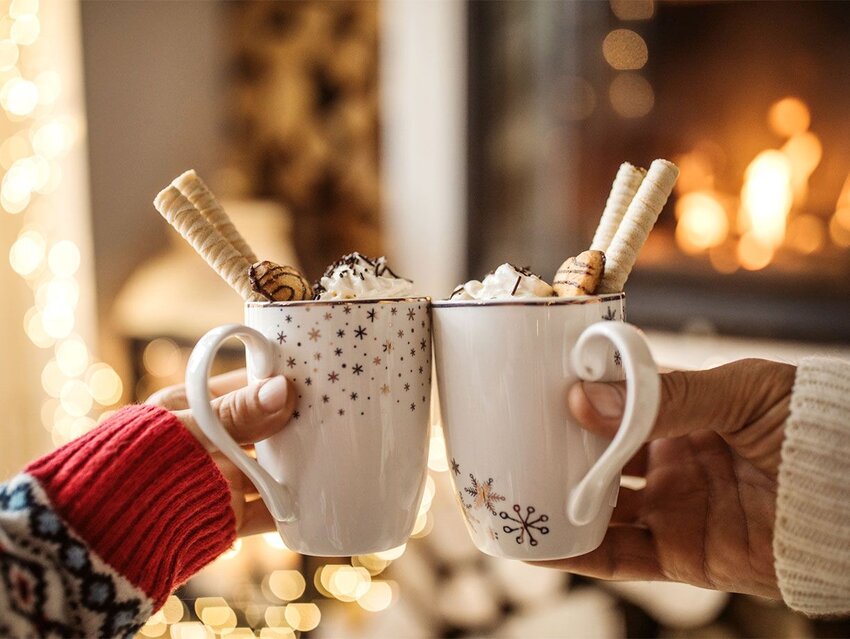While winter kicks off with the festivities of December and early January holidays, the rest of the season can lack in cheer as the snow piles up. If ice storms and dropping temperatures make you feel like there’s not a winter wonderland in sight, try to flip your spirits with some words that may be new to you. Here are some hiemal (fancy term for “wintry”) words to add to your vocabulary.
Hygge
While not winter-specific, many of the elements of chilly weather — like hot tea, a fuzzy blanket, sitting around a crackling fire with friends — evoke hygge. Pronounced HOO-gah, this Danish word means coziness and creating a sense of being in the moment. It comes from the Old Norwegian word for “wellbeing.” As the winter holidays approach, Danes love embracing hygge with plenty of candles and mulled wine. You can create hygge alone or with a group, so bring forth the comfy slippers and mugs of hot cocoa and bask in the relaxing atmosphere while watching the snowfall from a comfy chair.
Brumation
As we all know, hibernation is when animals preserve their energy by lowering their metabolisms for the winter. Animals that hibernate tend to be small mammals (chipmunks, hedgehogs, bats) and insects, amphibians, and reptiles. Though we may say bears hibernate, they’re actually denning — think of it more like frequent winter napping to preserve energy as opposed to prolonged periods of little activity. True hibernation can last for months, but brumation is a short-term period of sluggishness or inactivity some animals (often reptiles) use to survive cold temperatures. Brumation can last less than a day, but it affects an animal’s heartbeat and body temperature.
Anorak
Going out into some blustery weather? Make sure you’re bundled up, perhaps in an anorak. It’s a coat down to the hips with a hood to keep your head toasty. You can tell an anorak from other types of jackets by its short zipper. This popular coat is meant to protect against the elements, namely wind, which is what annoraaq means in Greenlandic..
Toboggan
Some of us enjoy winter indoors, soaking in the hygge vibes to stay cozy. Others love spending the season outside, using snowy sports to stay active and keep warm. A toboggan is an excellent way for those not quite coordinated enough to ski or snowboard to enjoy the slopes. Traditionally made of wood, but now also plastic, this type of sled has a curved front and long flat center. With a little elbow grease, you can even make your own. The word comes from the Algonquin word thapaken, which the French Canadians adapted into tabagane.
Apricity
Following a healthy snowfall, people will flock outdoors when the sun’s out. Whether it’s going for a walk or having a snowball fight, the “apricity,” or warmth from the sun in winter, is not to be missed. Unfortunately, this word has been somewhat lost to time, as it doesn’t appear in many contemporary dictionaries. Those that do list it often include an “archaic” tag. But don’t let that stop you from whipping this out for a Scrabble win on a cold day spent inside playing board games.
Featured image credit: svetikd/ iStock

